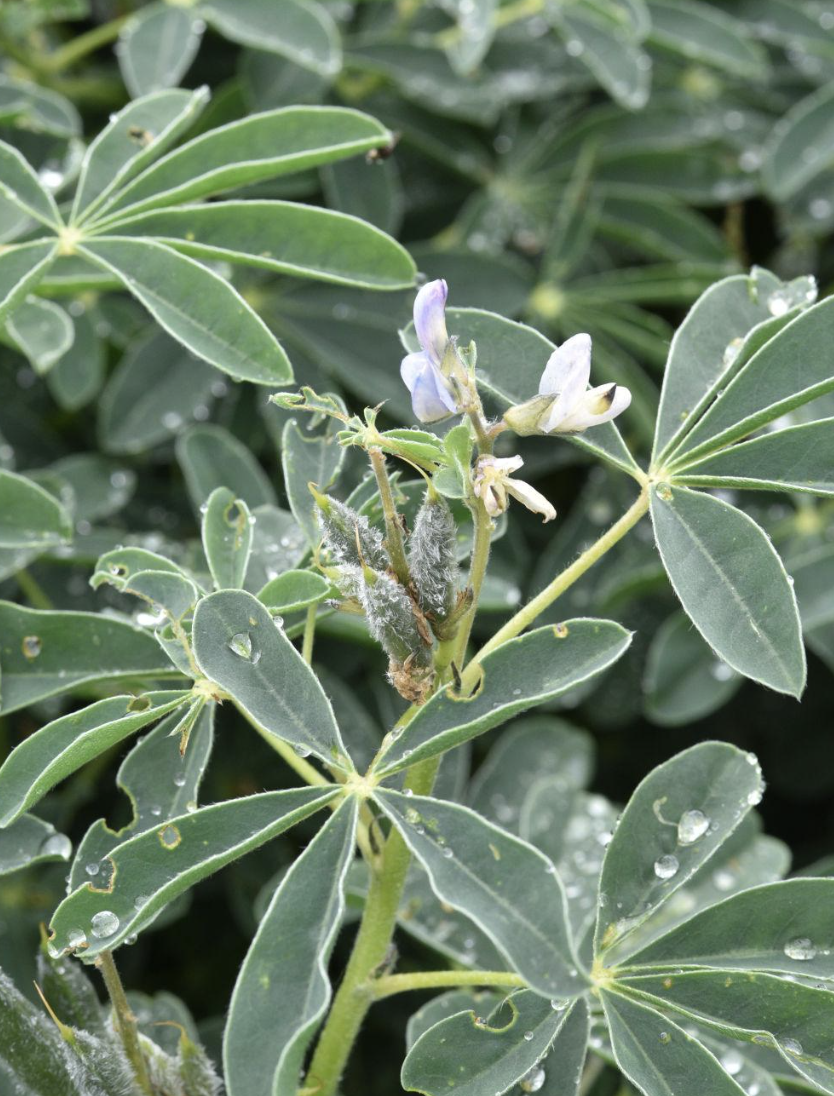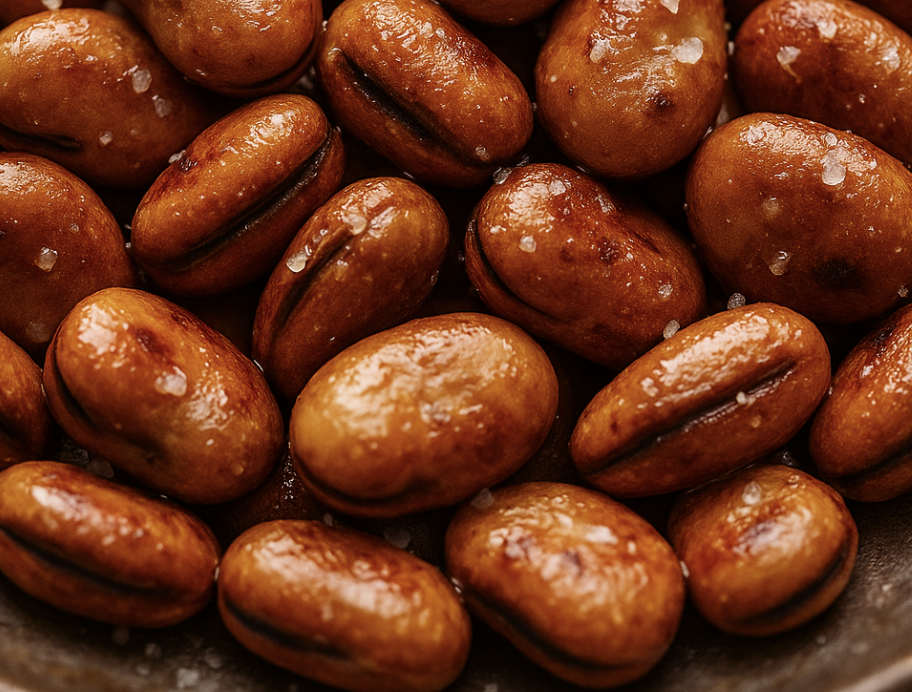Lupini Beans: The Ancient Snack Making a Comeback
Both me and my dog love beans. I know that’s a strange way to start a blog post, but it’s only significant because my dog is a picky little eater who only wants meat and Greenies.
Recently, I’ve been seeing more and more recipes with lupini beans and I’ve been intrigued to say the least.
Every so often, a food slips through history’s cracks, totally overlooked in one place, sometimes adored in another, but mostly waiting patiently for its moment to bloom.
Lupini beans are one of those foods.
For centuries they’ve been passed around the Mediterranean tucked into small paper cones at festivals, salted and brined until they squeak between your teeth.
They are not flashy, but they’re starting to become trendy for their protein content.
An Ancient Lineage
The lupini bean comes from the lupin plant, a hardy little legume that Roman soldiers once carried with them as rations.
The beans are rich in protein, fiber, and minerals, but they also hold alkaloids, which are just some bitter compounds that need to be carefully soaked away before they’re edible.
That extra step kept them in the shadows while lentils and chickpeas climbed the ladder of global fame.
Yet in Italy, Greece, Portugal, and Egypt, lupini beans never disappeared, they were too beloved to forget.
A Nutritional Powerhouse Hiding in Plain Sight
Crack open the brined skin of a nice lupini bean and you’ll find one of the highest-protein plant foods on Earth, sometimes 40% of the bean’s weight is pure protein.
They’re also teeming with fiber, low in starch, and full of micronutrients like magnesium and zinc.
Compared to the usual suspects (almonds, edamame, or peanuts) lupini beans are a quiet overachiever.
They don’t just fill you up, they sustain you, keeping blood sugar steady and hunger away for hours. That makes them a darling for athletes (my husband!), vegans, and anyone chasing satiety in a snack aisle flooded with empty calories and more sugar than their bodies could possibly handle.
Here are some nutrition facts per 100g of cooked lupini beans, brined
Calories: ~120 kcal
Protein: 16 g
Fat: 2.5 g
Carbohydrates: 12 g
Fiber: 4.6 g
Sugars: <1 g
Calcium: 50 mg (about 5% DV)
Iron: 2 mg (about 11% DV)
Magnesium: 54 mg (14% DV)
Potassium: 370 mg (11% DV)
Zinc: 1.1 mg (10% DV)
Cholesterol: 0 g
Glycemic Index: Very low (doesn’t spike blood sugar)
The Edamame Parallel
If you’re looking for a modern comparison to help you imagine them, think of edamame.
Once an obscure Japanese appetizer, edamame eventually made the leap to international supermarkets and gyms everywhere around the world. Lupini beans are poised for that same climb at this moment in time. They are portable (depending on cooking preparation at least!), protein-dense (for the bodybuilders of the world), and exotic enough to feel new, but familiar enough not to intimidate. After all, they are just a couple of beans!
It’s not hard to imagine them becoming a mainstay at fitness events (athletes will love them!), craft breweries (honestly, anything salty would fly), or even tucked into kids’ lunchboxes.
Some Recipes You Might Enjoy
Classic Mediterranean Brined Lupini Beans
Ingredients:
2 cups dried lupini beans (sweet variety if available)
1 gallon water
½ cup kosher salt
Optional: bay leaves, garlic, or chili flakes for flavor
Instructions:
Soak: Place beans in a large bowl, cover with water, and soak for 24 hours. Drain.
Boil: Add soaked beans to a pot with fresh water and boil for 60 minutes until tender but still firm. Drain again.
Brine: Dissolve ½ cup salt in 2 quarts water. Add beans to a jar or container, cover with brine.
Ferment/Soak Out Bitterness: Let sit in the fridge for 5–7 days, changing the brine daily until bitterness is gone.
Serve: Eat cold as a snack, squeezing beans from their skins. Great with beer, wine, or alongside olives.
Traditional, salty, and addictive, the way people have eaten them for thousands of years.
Warm Butter-Roasted Lupini Beans with Garlic & Herbs
Ingredients:
2 cups brined lupini beans, skins removed
2 tbsp unsalted butter (or olive oil for vegan)
3 cloves garlic, thinly sliced
1 tsp fresh rosemary or thyme, chopped
Sea salt & cracked pepper to taste
Optional: grated Parmesan or nutritional yeast
Instructions:
Prep: Drain lupini beans and pat dry with a towel.
Sauté Garlic: Heat butter in a skillet over medium heat. Add garlic slices and cook until golden.
Roast Beans: Toss in the lupini beans and fresh herbs. Stir frequently for 5–7 minutes until beans are blistered and lightly golden.
Finish: Season generously with sea salt and cracked pepper. Add Parmesan if desired.
Serve: As a warm appetizer, side dish, or even tossed into a salad.
This recipe transforms lupini beans from a bar snack into a cozy, comfort-food dish.
Where to Find Lupini Beans
Lupini beans are still a bit of a hidden gem, but they’re becoming easier to track down as they gain popularity.
If you live near an Italian, Portuguese, or Middle Eastern grocery store, you’ll often find them sold in jars or vacuum-sealed packs, already brined and ready to eat, which is the easiest way to get them.
Some natural food stores and health-focused chains carry them in the snack aisle, usually near olives or specialty beans.
And if your local shops don’t have them yet, online retailers like Amazon, Nuts.com, and Mediterranean import sites almost always do!
The easiest entry point is buying them pre-brined, they’re ready to eat right out of the jar. But if you want the full ritual (and extreme patience test as soaking them could last days), you can also buy them dried and soak, boil, and brine them yourself.
Amazon’s Cento Pre-Brined
Individually Wrapped Bean Snack Bags to go
Dried and Ready to be Worked With
So maybe it’s time their moment arrives, and honestly, I’m here for it.
I made a delicious addition to our roasted chicken thighs last night by just pan searing these little guys with butter and salt, then at the last minute added some fresh garlic.
We’ve circled back to sourdough, to ancient grains, to fermentation, and I really think lupini beans are due for their turn.
They carry the weight of history and the promise of health and excessive protein, tucked into one tiny brined little shell.
If edamame was the bean of the last two decades, lupini might just be the bean of the next two.


